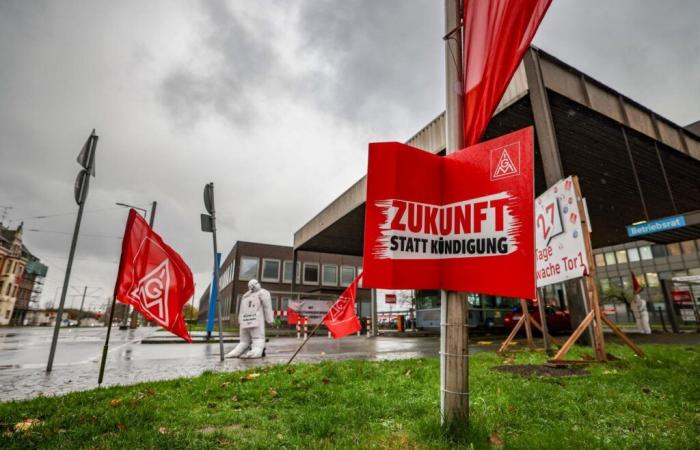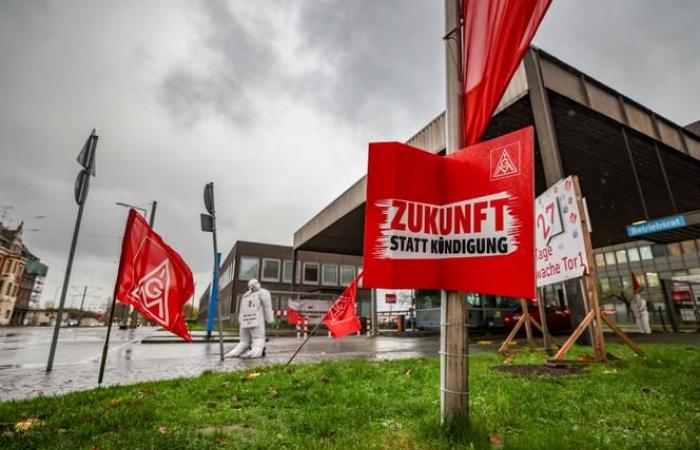The black streak continues in German industry. On Monday, November 25, the steel branch of ThyssenKrupp announced the elimination of 11,000 jobs by 2030, out of the 27,000 in the Ruhr steelmaker, emblematic of the German steel industry since its origins. This major social plan comes in a context of a large wave of industrial job destruction across the Rhine, which particularly affects the automobile industry, the central specialty of “made in Germany”.
Read also | Article reserved for our subscribers In Germany, ThyssenKrupp is torn apart over the rescue of its steel division
Read later
ThyssenKrupp Steel Europe (TKSE), in crisis for a decade, has so far managed to limit the extent of the workforce reductions. The plan presented Monday by management represents a fundamental break in the history of the group with a strong social tradition: 5,000 jobs will disappear in production and administrative services by 2030, a production site must close. And 6,000 other positions will be “transferred” outside the company through measures to outsource services or sell activities, the press release specifies.
These figures, proposed for discussion with the IG Metall union, are still subject to change. But everything suggests that 40% of the workforce of one of the most traditional “made in Germany” companies will disappear. TKSE forecasts a massive reduction in the quantities of steel produced, from the current 11.5 million tonnes to 8.7 million to 9 million tonnes per year by the end of the decade.
Decline in European demand
Management specifies reacting to “fundamental and structural changes in the European steel market”faced with overcapacity and “rising imports of cheap steel” from Asia. This radical plan comes a few months after the controversial arrival of billionaire Daniel Kretinsky, who took a stake in the steelmaker in the spring of 2024 with 20% of the shares, through his company EP Group, and who should increase to 50% of the capital. .
This rise in power of the Czech businessman within the steelmaker led to serial resignations within management in August. With the support of the billionaire, the group has, in any case, confirmed its commitments to the energy transition. ThyssenKrupp, a true industrial myth, received, at the end of 2022, 2 billion euros in subsidies from federal and regional funds to switch its blast furnaces to hydrogen.
You have 50.42% of this article left to read. The rest is reserved for subscribers.







